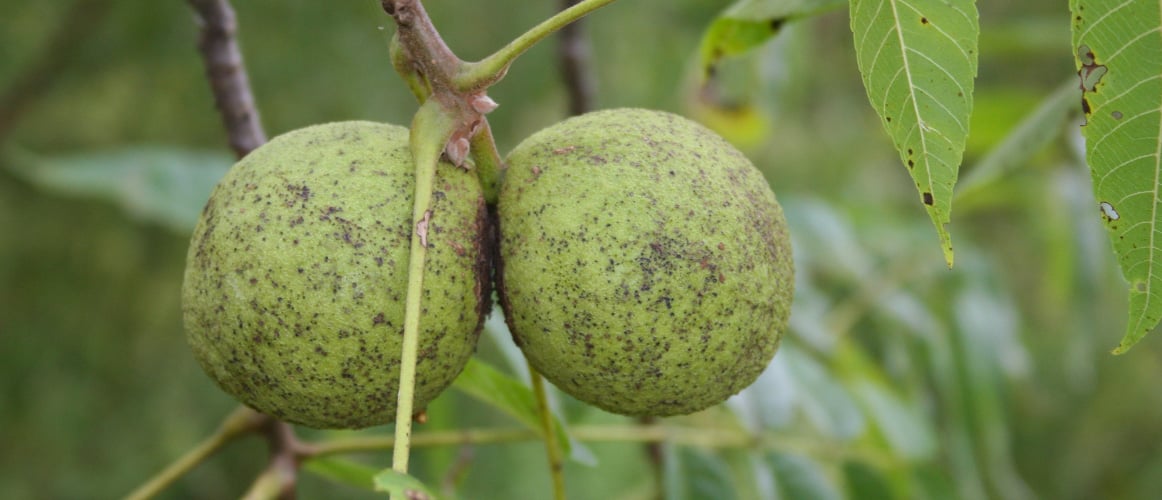The concept of allelopathy has been noticed world-wide, and its first noted observation dates back to 350 B.C. Allelopathy is derived from the Greek words allelon, meaning one another, and pathos meaning suffering. Allelotoxins can be found in leaves, flowers, roots, fruits, and stems. In some circumstances, it can be found in the surrounding soil.
Black Walnut is likely the most commonly known plant in this group. It is well documented that this tree will emit a toxin called Juglone and is a respiration inhibitor. Juglone is present in all parts of the plant and has been observed throughout the rootzone and up to 3 times the area of the canopy.
The greatest concentration of toxins generally occurs directly under the canopy as the highest levels of Juglone can be found in roots, nut hulls, and buds. The most seriously affected plants are tomatoes, peppers, and eggplant which exhibit wilting, chlorosis, and death. Other plants displaying a range of sensitivity include hackberry, crabapple, apple, basswood, pine, spruce, and certain viburnums.
Digging deeper into those species that come equipped with plant toxins, it begins to look like the usual suspects in terms of invasive weeds. Included in this group are the likes of Tree-of-Heaven (Ailanthus), Asters, Canada Thistle, Dog Fennel, Foxtail, Garlic Mustard, Goldenrod, Honeysuckle, Japanese Knotweed, Johnsongrass, Lesser Celandine, Nutsedge, Oriental Bittersweet, Quackgrass, Ragweed, Sumac, and more recently added Japanese Stiltgrass.
While the previous list looks like a perfectly good use of an herbicide, there are several desirable plants that also produce allelotoxins including Barley, Brassicas (cabbage, cauliflower, broccoli, etc.) Buckwheat, Corn, Cucumber, Ferns, Forsythia, Juniper, Kentucky Bluegrass, Oats, Oregano, Rye, Rhododendron, Sugar Maple, Sunflower, Tall Fescue, and Wheat.
So where does that leave us? Identify the plants nearby the existing or proposed landscape for potential problems. Do a little bit of research on companion plants and pay extra attention when removing and/or tilling plant parts into beds.
Manage invasive weeds, not only from a competition perspective but also from potential chemical warfare. The use of non-selectives (glyphosate) like QuikPro or Ranger Pro will help. There are other options including Triclopyr, products containing Glufosinate, and a few specialty herbicides to help with some of the woody species.
Contact the Ewing Technical Services Team with any questions about plant biochemical processes.




